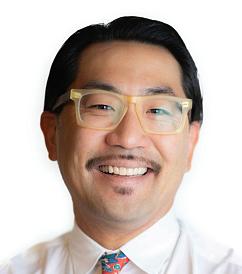 MAYO CLINIC
MAYO CLINIC































 MAYO CLINIC
MAYO CLINIC































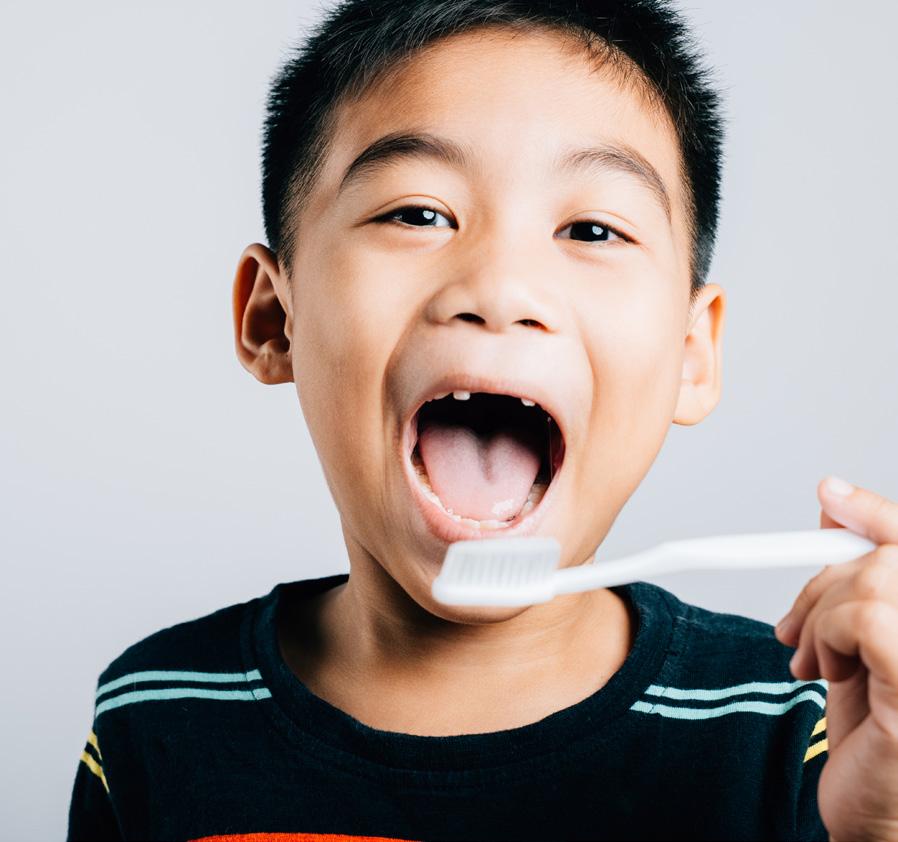
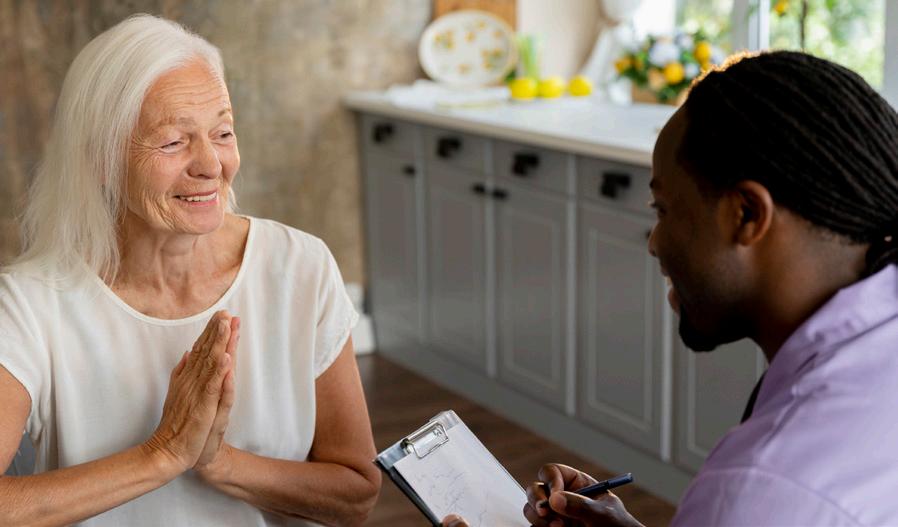


Ilove to be outdoors. I enjoy running, hiking and swimming. Often in the summer, I take my family camping, and we go kayaking, canoeing and do other activities. With the temperatures potentially above average any given summer, what advice do you have for making sure we avoid overheating issues while being active outside?
It is great that you are dedicated to staying healthy through exercise, and being outdoors certainly is a bonus. Being active at all ages is recommended for all patients to improve overall health. While some people lose the motivation to exercise when it is hot outside, others enjoy activities that only warm weather can bring.
Hot weather, however, can put extra stress on your body. If you are not careful, you can risk serious illness because of the air temperature, humidity and often lack of hydration. It is important to take extra precautions regardless of the outdoor activities you choose.
• WATCH THE TEMPERATURE. Pay attention to weather forecasts and heat alerts. Know what the temperature is expected to be for the duration of your planned outdoor activity. In running events, there are flag warnings that correspond to the degree of heat and humidity. For example, a yellow flag requires careful monitoring, and races are canceled in black flag conditions.
• GET ACCLIMATED TO THE WEATHER. If you are used to exercising indoors or in cooler weather, take it easy at first when you exercise in the heat. It can take at least one to two weeks to adapt to the heat. As your body adapts to the heat over time, gradually increase the length and intensity of your workouts.
• KNOW YOUR FITNESS LEVEL. If you are not as fit as you would like or are new to exercise, be extra cautious when working out in the heat. Your body may have a lower tolerance to the heat. Reduce your exercise intensity and take frequent breaks.
• DRINK PLENTY OF FLUIDS. Dehydration is a key factor in heat illness. Help your body sweat and cool down by staying well-hydrated with water. Do not wait until you are thirsty to drink fluids. If you plan to exercise intensely, consider a sports drink and water. Sports drinks can replace the sodium, chloride and potassium you lose through sweating. Avoid drinks with excessive sugar and alcoholic drinks because they can promote fluid loss.
• DRESS APPROPRIATELY. Lightweight, loose-fitting clothing helps sweat evaporate and keeps you cooler. Avoid dark colors that can absorb heat. If possible, wear a light-colored, wide-brimmed hat.
• AVOID MIDDAY SUN. In warmer weather months, it is best to exercise in the morning or evening, when it’s likely to be a bit cooler. If possible, exercise in shady areas or do a water workout in a pool.
• WEAR SUNSCREEN. A sunburn decreases your body’s ability to cool itself and increases the risk of skin cancer. Use a sunscreen with a sun protection factor of at least 50 and reapply often if you are in water, sweating or doing vigorous activity for more than two hours.
• HAVE A BACKUP PLAN. If you’re concerned about the heat or humidity, stay indoors. Work out at the gym, walk laps inside the mall or climb stairs inside an air-conditioned building.
• UNDERSTAND YOUR MEDICAL RISKS. Certain medical conditions or medications can increase your risk of a heat-related illness. If you plan to exercise in the heat, talk to your health care professional about precautions.
• PAY ATTENTION TO YOUR BODY AND ITS TEMPERATURE. You want to be mindful of your body to reduce the risk of serious heat-related conditions, including heatstroke — when your
body temperature is greater than 104 F. Signs and symptoms of heat-related illness vary but may include muscle cramps, nausea or vomiting, fainting, dizziness or headache, excessive sweating, low blood pressure and vision problems.
Heat-related illnesses are largely preventable. If you begin to experience any issues, stop exercising immediately and get out of the heat. It is imperative to lower your body temperature and hydrate right away. You may place cool, wet towels or ice packs on your neck, forehead and under your arms; spray yourself with water from a hose or shower; or sit in a tub filled with cold water. Drink fluids, such as water or a sports drink. If you do not feel better within about 20 minutes, seek emergency medical care.
Lastly, if you have any other health issues, it is advisable to talk with your primary health provider before returning to vigorous activity. — Compiled by Mayo Clinic staff.
Mayo Clinic Q & A is an educational resource and doesn’t replace regular medical care. Email a question to MayoClinicQ&A@mayo.edu. For more information, visit www.mayoclinic.org











We are committed to providing the ULTIMATE COMPREHENSIVE VISION CARE
Dry eye disease treatment
Specialty contact lens fittings
Myopia control
Eye disease diagnosis & management

Diabetic eye exams
Full-service optical boutique
Frame repairs
VISIT US AT OUR 2 CON VENIENT LOCATIONS:
Downtown Anchorage
907-272-2557
1345 West 9th Ave. Anchorage, AK 99501
8:30 AM - 6:00 PM 8:30 AM - 6:00 PM 8:30 AM - 6:00 PM 8:30 AM - 6:00 PM 8:30 AM - 6:00 PM



Matsu Valley 907-376-5266
1700 East Parks Hwy #300 Wasilla, AK 99654
8:00 AM - 5:30 PM 8:00 AM - 5:30 PM 8:00 AM - 5:30 PM 8:00 AM - 5:30 PM 8:00 AM - 5:30 PM




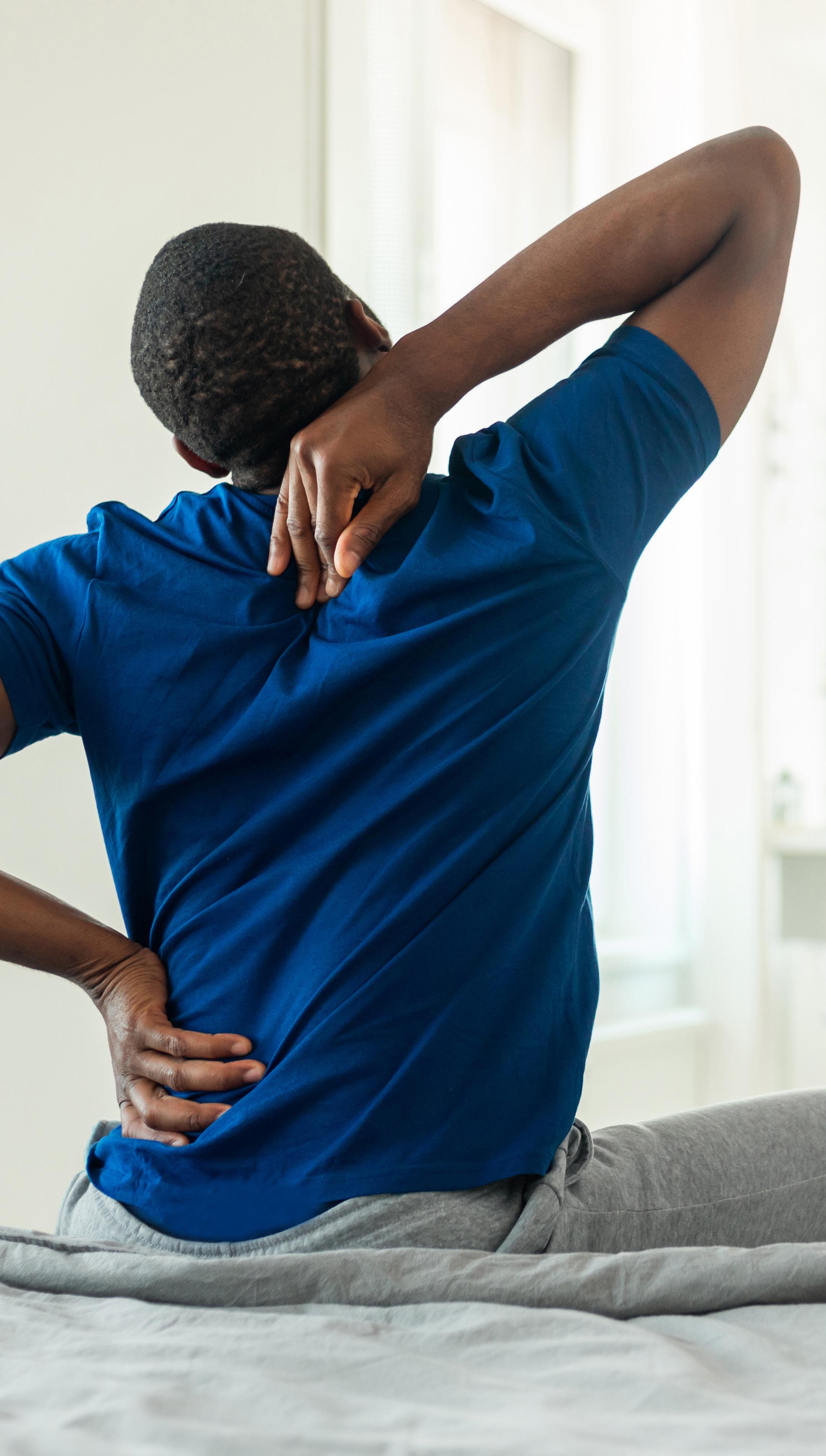 Kendall Snyder, M.D., Mayo Foundation for Medical Education and Research, Premium Health News Service
Kendall Snyder, M.D., Mayo Foundation for Medical Education and Research, Premium Health News Service
DEAR MAYO CLINIC: It seems like everyone I know has some type of back pain. My husband and I both suffer from back pain but mine is a dull ache at the end of the day while he seems to have shooting pain. Why are our backs so susceptible to pain and how do I know when we should talk with our doctor?
ANSWER: Back pain is extremely common, so you and your husband are not alone. About 80% of adults in the U.S. will experience low back pain at some point. Your back is made up of 30 bones stacked in a column surrounded by muscles and ligaments. Nearly every movement you make involves your back in some manner. This constant movement and support mean that your back is susceptible to strain and stress.
Not all back pain is the same, though, and symptoms can vary widely. Occasionally, a person with back pain can pinpoint the exact time it started, like when attempting to lift a heavy object or after a fall. More commonly, no specific trigger or event led to the pain.
Here are the most common causes and descriptions of back pain:
• MUSCLE OR LIGAMENT STRAINS: Muscle or ligament strains are usually caused by a single event, such as using poor body mechanics to lift a heavy object. Strains feel like a sudden stabbing, localized pain. This pain worsens when you contract the muscle or twist. Redness, swelling and bruising can occur. The pain can be intense. Occasionally, people state that they have “thrown out” their backs. In most cases, they have a muscle or ligament strain.
• OSTEOARTHRITIS: Low back pain often is caused by osteoarthritis, the most common type of arthritis. Arthritis can lead to a narrowing of the space around the spinal cord or nerve roots, a condition
called spinal stenosis. It occurs most often in the low back and neck. When this occurs in the low back, the most common symptoms are pain in both legs, tingling, numbness and sometimes muscle weakness.
• BULGING DISK: Disks act as cushions between the bones, or vertebrae, in your spine. The material inside a disk can bulge and press on a nerve. This is called a bulging disk. Pain from a bulging disk usually occurs in the low back and radiates into the hips, buttocks or legs. It often is worse with activity and feels better when resting.
• HERNIATED DISK: A herniated disk results when a tear in the tough outer layer of a disk allows some of the inner disk material to protrude outward. Herniated disks also are called ruptured disks or slipped disks. But compared with a bulging disk, a herniated disk is more likely to cause pain because it protrudes farther and is more likely to irritate nerve roots. Depending on where the herniated disk is, it can result in pain, numbness or weakness in one or both legs. These symptoms usually affect only one side of the body.
• SCIATICA: Sciatica is named after the sciatic nerve, which is the largest nerve in your body. It most commonly occurs when a herniated disk, bone spur or spinal stenosis compresses part of the nerve. Sciatica is a sharp, shooting pain that runs from your low back down the side or back of your leg. Typically, sciatica affects only one side of your body.
• DEGENERATIVE DISK DISEASE: As you age, the disks between your vertebrae begin to shrink and lose their softer qualities. This narrows the space between the vertebrae and can make your spine less flexible. Degenerative disk disease does not always cause symptoms. If it does, symptoms vary widely in nature and severity. Generally, pain comes and goes over a long time. It may feel better when you change positions or walk, and worsen when you sit, bend or twist.
Most low back pain — even when severe — goes away on its own in six to eight weeks with self-care, such as resting from heavy lifting, applying heat or ice, using over-the-counter pain medications and stretching. Physical therapy can provide tremendous relief from back and limb pain, and oftentimes people do not need more treatment.
Talk with your health care professional if you have a history of cancer, or if your pain:
• Is constant or intense, especially at night or when you lie down.
• Spreads down one or both legs.
• Causes weakness, numbness or tingling in one or both legs.
• Occurs with a fever, swelling or redness on your back.
• Occurs with unintended weight loss.
• Occurs with new bowel or bladder control problems.
Also, if your back pain occurs after a fall or another injury, you should seek medical attention. — Kendall Snyder, M.D., Neurosurgery, Mayo Clinic Health System, La Crosse, Wisconsin
Mayo Clinic Q & A is an educational resource and doesn’t replace regular medical care. Email a question to MayoClinicQ&A@mayo.edu. For more information, visit www.mayoclinic.org.

If you are suffering from neck pain, migraines, headaches, radiating pain, muscle spasm, upper, mid or low back pain then you need to investigate this. The Atlas Orthogonal and Cox Flexion Distraction Procedures are gentle, specific and proven effective for thousands of patients. We are in-network with BC/BS, Aetna, Tri-west & Medicare Call 907-677-6953 to schedule your Complimentar y 15 minute
Pre-Consultation with our doctors today!


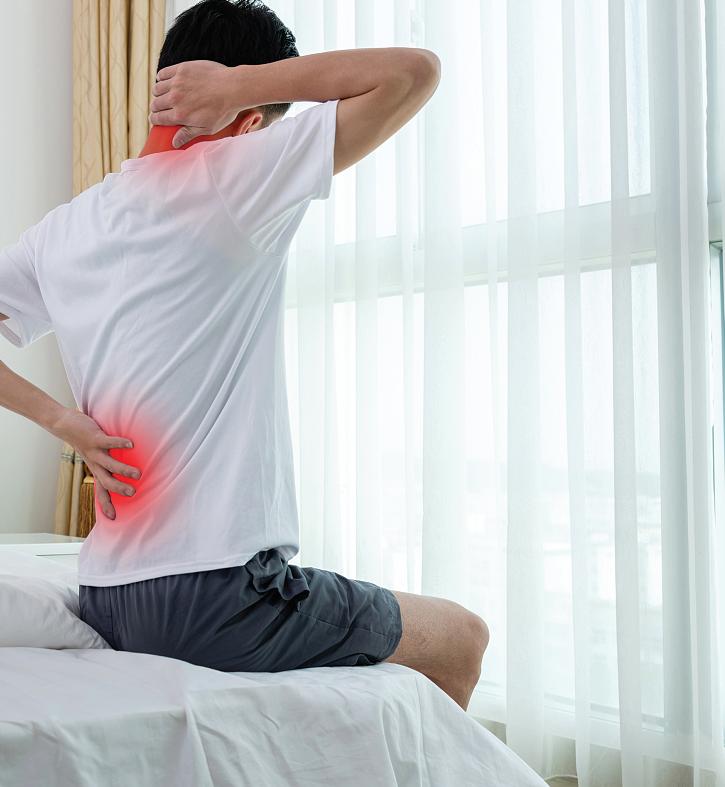

Most people want to age in place and live at home for as long as possible: according to an AARP survey, three-quarters of people 50 and older are hoping to do so.
But managing this successfully may mean hiring outside help, such as health aides who can assist you with daily activities that have become challenging. You might wonder when exactly it will make sense to seek that service. How will you know when it’s time? What can aides do for you? What are the costs and how can you make the most of their help?
An easy way to know if it’s time for outside help is if your health takes a sudden turn for the worse — perhaps as the result of a fall that affects your mobility. But more often, the need for professional assistance at home isn’t so obvious. It develops gradually, as certain abilities — such as cooking, cleaning or driving — become more difficult.
Even if you’re busy, happy and able to do your own tasks and errands now, there may come a time when the balance shifts and daily activities become challenging.
“A lot of times these observations are made by family members or friends, and they start the discussion about getting help,” says Dr. Suzanne Salamon, associate chief of gerontology at Harvard-affiliated Beth Israel Deaconess Medical Center.
You don’t have to wait until family and friends urge you to get outside help. Salamon recommends that you periodically assess your abilities and how well you’re managing on your own.
For example:
• Is it harder to get in and out of the bathtub because of muscle weakness or balance problems?
• Has driving become difficult because of vision changes, arthritis or other reasons?
• Are you keeping up with your medication regimen, or are you sometimes not sure if you’ve taken pills?
• Are cooking and cleaning becoming much more of a chore than they used to be?
• Do you find grocery shopping or errands a little overwhelming?
• Do you need help bathing or getting dressed?
Be honest about the answers, and let your needs be your guide. “You might not need a home health aide yet. Maybe you only need a cleaning service to come in every other week,” Salamon says. “But if you need more assistance, it’s probably time to hire health aides.”
Health aides are professional caregivers. There are two main types of aides.
• A certified nursing assistant (CNA): This is a trained, licensed professional who can provide hands-on physical care, such as helping you get up and down from a chair or bed, bathing, dressing, feeding, brushing teeth and using the bathroom. A CNA can also perform homemaker services, such as cooking, light housework, transportation, shopping, overseeing medication routines or sharing meaningful activities or conversation.
• A companion: This is a registered professional who can provide homemaker services but is not trained in body mechanics and cannot provide hands-on care.
The best place to find aides is through a private duty care agency, which vets and employs the aides, and takes care of their taxes and social security withholdings.
How can you find a reliable private duty care company, and what questions should you ask? Salamon suggests asking for recommendations from friends, your doctor, local senior services or your local Area Agency on Aging.
Private duty care is expensive. Costs average $25 to $30 per hour, typically with a three-to-four-hour minimum per week.
Those fees add up quickly. For example, if you need help two days per week for three hours per day, you’ll pay about $600 to $720 per month.
Costs are not typically covered by Medicare, but they are often covered by veterans benefits. And they are sometimes covered fully or partially by long-term care insurance, state or local agencies on aging, or nonprofit groups.
What might hold you back from getting help you need?
Cost is a factor, of course. Even if it isn’t, you might not jump at the chance to hire home health aides. It could be that you feel you don’t need them yet, or that you’d be uncomfortable with strangers in your home.
But the sooner you can become accustomed to having professionals assist you with parts of your care as they become challenging, the better prepared you’ll be later, when you might require much more assistance. Trying services now can set you up with contacts — and caring people — you might need to lean on more often as time goes by.
How can you get over your reluctance? “Remember that you don’t have to commit to private duty care forever. Just try it for a few hours once a week. If it doesn’t go well, consider alternatives, such as eventually moving into assisted living,” Salamon says.
How far can a few hours of in-home help go?
What can an aide accomplish if you start out with just a few hours per week? Plenty.
You might want to set up a regular routine that includes doing laundry, changing bed linens, going on a walk with you and making a large meal that can be frozen into smaller portions. Or you might want to focus on a theme for each once-a-week visit. For example, the aide can help you do errands one week, do some light house cleaning the next week and help you cook the week after that.
“This is your opportunity to get the help you need, whether it’s with jobs around the house or basic activities of daily living,” Salamon says. “In the long run, it’s the kind of service that will keep you living on your own longer.”
Heidi Godman is executive editor of Harvard Health Letter.To find out if you qualify and how to apply, scan the
or call


The most common cause of chronic stomach pain in children isn’t anything you can find on a test or cure with a medicine. And that can make it very challenging to diagnose — and treat.
You may not have ever heard of functional abdominal pain. Yet it ranks as the most common cause of stomach pain lasting two months or more in children and teens.
The mind and the body are tightly connected in ways that we are still working to understand, and this is particularly true of the mind and the gastrointestinal tract. Stress — particularly chronic stress, depression and anxiety — can lead to pain that is very real. Sometimes the pain is the only symptom of stress, especially in children who are high-achieving or tend to hide their emotions.
Sometimes the pain doesn’t start from stress but from an infection or other illness, and stays once the illness is gone or adds additional pain to the illness while it is being
treated. Worrying about the pain and its possible cause can make things worse. The nervous system of the gut can go into overdrive.
Children with functional abdominal pain can have mild symptoms that just show up occasionally, or they can have more severe symptoms that interfere with daily life. Along with stomachaches, they can have nausea, vomiting, constipation or diarrhea — or some combination of all of them. They may have a poor appetite or complain of feeling full very quickly.
It’s important to check in with your doctor if your child is having chronic stomachaches. They should have a physical examination, and your doctor may want to do some testing, such as blood or stool tests, as there are many medical conditions that can cause chronic stomachaches.
It’s particularly important to call your doctor if your child:
• is losing weight
• has blood in their stool
• has severe pain
• has fever, rashes, sore joints or other signs of illness
If your doctor finds that your child’s examination and tests are normal, and they aren’t losing weight, chances are that your child has functional abdominal pain.
For some families, getting this diagnosis sounds like the doctors are saying that it is all in the child’s head. But nothing could be further from the truth. It is very real pain — but it is not being caused by something dangerous, which is very good news.
There are many ways to help a child who has functional abdominal pain once the diagnosis is made. They include:
• Understanding and managing stressors in the child’s life, if there are any
• Medications recommended by your health care team can help with symptoms, such as laxatives for constipation
• Cognitive behavioral therapy, which is a kind of therapy that teaches strategies for managing pain, as well as managing any stress or sadness that can be contributing
• Meditation, yoga and other ways for a child to relax and regulate how they react to their world
• For some children, a low-FODMAP diet can be helpful
• Probiotics, peppermint oil preparations and some other supplements are sometimes used to help soothe and prevent pain.
Most children with functional abdominal pain can receive care from their pediatrician. Regular visits are a good idea, to check in to see how things are going and adjust any treatments. If things aren’t getting better, a referral to a gastroenterologist can be helpful.
Claire McCarthy, M.D., is a senior faculty editor for Harvard Health Publishing.
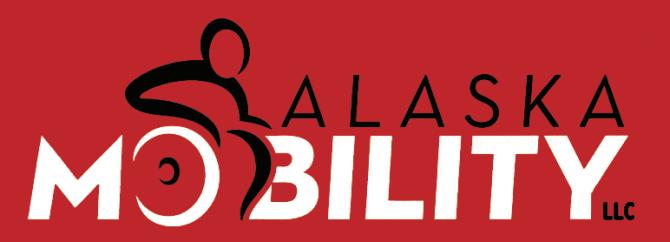



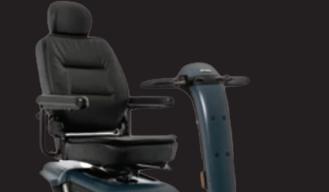
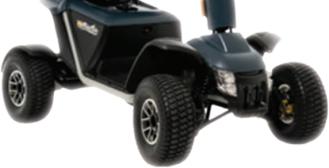

:QMy doctor keeps lowering my goal blood pressure and just added another medication. What’s changed?
:AIt wasn’t so long ago that high blood pressure in aging adults was called “essential hypertension.” The thinking was that high blood pressure was essential to deliver sufficient blood to the brain. With age, blood vessels become stiffer and less flexible. To reach the brain, the belief was that circulating blood needs an extra “push.”
That’s why most doctors previously considered a systolic blood pressure — the top number in the reading — was okay at 150 mm Hg for older people. Increasingly, however, doctors are reconsidering their approach to treating hypertension in people age 60 and older.
The results of a recent study added to the evidence showing the effectiveness of lower blood pressure. The study, in the Sept. 30, 2021, issue of The New England Journal of Medicine, included more than 8,500 people ages 60 to 80 with high blood pressure. Half were randomly assigned to a standard treatment group, with a target for systolic blood pressure of 130 to 150 mm Hg. For the other half, the intensive treatment group, the systolic target was 110 to 130 mm Hg.
After a year, the average systolic blood pressure in the standard group was 135 mm Hg, compared with 127 mm Hg in the intensive group. During a median followup of just over three years, researchers tracked the participants’ rates of serious cardiovascular problems, including stroke, heart attack, heart failure, and atrial fibrillation. The incidence of these problems was 4.6% among those who received standard treatment, compared with 3.5% in those who received intensive treatment.
Rates of adverse side effects, including dizziness, fainting, fractures, headaches, and cough, were similar in both groups. However, the intensive-treatment group did experience more episodes of abnormally low blood pressure (hypotension).
The findings support those from an earlier trial done in the United States that also documented fewer heartrelated problems when doctors aimed for an even lower
— 120 mm Hg — systolic blood pressure target. In fact, when researchers analyzed the results only from people ages 75 and older, the heart-related benefits were even more striking. And the rates of side effects were similar to those seen in people with a target of 140 mm Hg.
People often expect that a single medication will get them to their blood pressure goal, but that’s rarely feasible. Using lower doses of two different blood pressure medications is more effective than maximizing the dose of a single drug. High blood pressure can result from several different mechanisms, so combining drugs that target different mechanisms typically works better. The combination approach is also less likely to cause side effects.

Q:How does tracking your heart rate provide information about your heart health?
A:Checking your heart rate at rest and with exercise can provide information about your fitness level and may suggest a heart problem if your pulse is too slow, too fast or irregular. Three good times to check your heart rate are soon after you wake up in the morning; during exercise and in the immediate postexercise recovery period.
To get a good sense of your resting heart rate, check it every few mornings over the course of several weeks. In general, a lower resting heart rate translates to better fitness and cardiovascular health. A resting heart rate that is too low — less than 50 beats per minute — or one that is 100 or higher could be a sign of trouble and should prompt a call to your doctor.
You can check your heart rate or pulse using your fingers. With your index and middle fingers, press lightly on the opposite wrist, just below the fat pad of your thumb. Or press gently on the side of your neck, just below your jawbone. Easier yet, use a smart watch or wrist-worn fitness tracker to display your resting heart rate.
To track your heart rate with exercise, you will need a smartwatch or fitness tracker. These devices automatically calculate your “target” heart rate, or the heart rate you’re supposed to reach during exercise. But target heart rate zones aren’t necessarily accurate for many people. Here’s why: These devices calculate your target heart rate as a percentage of your maximum

heart rate, which in turn is an estimate based solely on your age. One standard formula is 220 minus your age; another is 200 minus half your age.
The estimated maximum heart rate of a 70-year-old is 150. But that figure might be too low for a 70-year-old who is lean and runs five miles several times a week — and too high for a 70-year-old who is overweight and whose only exercise is a daily walk around the block.
If you’re working on improving your cardiovascular fitness, one metric you might want to measure is your heart rate recovery. It’s a gauge of how quickly your heart rate drops or recovers after intense exercise. To check it, simply measure your heart rate immediately after exercising,
then again two minutes later. The difference between those two values is your heart rate recovery. A value below 20 suggests poor fitness. As with your resting heart rate, multiple measurements over time provide the most reliable information.
If you’re starting or ramping up an exercise routine, your resting heart rate may gradually drop and your heart rate recovery value may slowly rise — two trends that bode well for your heart and overall health.
Howard LeWine, M.D., is an internist at Brigham and Women’s Hospital in Boston and assistant professor at Harvard Medical School. For additional consumer health information, please visit www.health.harvard.edu.
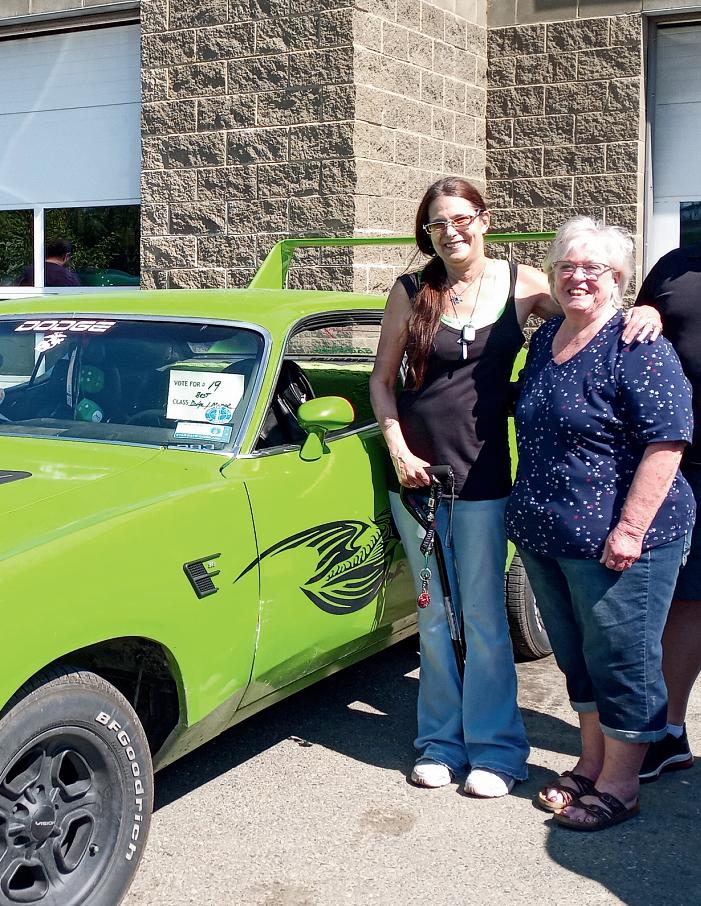

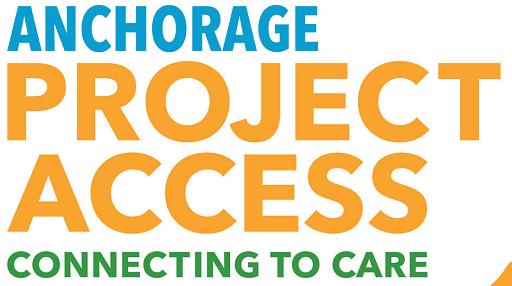
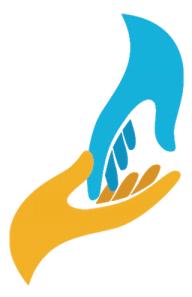

Anchorage Project Access (APA) is the only health care safety net of its kind in Alaska. In partnership with over 800 donating specialty physicians, dentists, and mental health counselors, APA coordinates care for hundreds of patients a year. APA provides three key services to individuals and families with limited income and without health insurance. Working with primary care physicians and other health care providers, APA matches a patient in need with a specialist willing to offer treatment at no cost to the patient. The APA staff coordinate the patients’ treatment and help patients navigate complex systems of care. When open enrollment occurs for health insurance, APA staff assist patients to enroll in ACA marketplace, Medicaid or Medicare health insurance plans.
APA helped Kelly Schittenhelm return to the track after back pain derailed her health and her career. Kelly is 62 and lives in Seward. She loved working in security and as a member of a racecar pit crew, but over the years, she found it impossible to work due to her back pain. Kelly suffered for many years from worsening back pain and loss of mobility. “Over the years, I couldn’t walk as much as I used to. I would fall quite a bit and couldn’t understand why.” Kelly’s health condition continued to deteriorate and she had to retire after a 30-year career.
Kelly fell into a deep depression and when she reached out to her primary care physician, she was referred to Anchorage Project Access. She was unemployed and had no health insurance. Kelly was eligible for APA’s donated services. She enrolled in the program and began working with Orthopedic Physicians of Alaska and Imaging Associates. With the help of the generous care donated by these practices, Kelly was given a new lease on life. She began taking medication and received physical therapy from United Physical Therapy. Kelly enrolled in Medicaid and continued to receive additional services through her insurance plan.
Since 2005, APA’s services have continued to save lives, restore patients’ ability to return to work, and resume activities. Local providers have donated over $56.1 million in donated care through APA.















Getting your teeth cleaned professionally feels like a dental health reset. Your teeth get scrubbed, scraped and polished to perfection. Whether they stay that way is up to you. What happens at home can be very different from what happens at the dentist’s office. But don’t grit your teeth over it. Check out these three tips to boost your tooth-brushing game and improve your health in the process.
Every time you eat or drink something, bits of food or residue can cling to your teeth and gums. The debris and its bacteria turn into a sticky film called plaque. If it’s left on the teeth too long, it calcifies. The hardened plaque is called calculus, and it can’t be removed with a toothbrush.
“Inside the calculus are bacteria that release acids that cause cavities, break down your enamel and tunnel inside the tooth toward the nerve and jaw bone, causing infection if left untreated. From there, bacteria can travel to other parts of your body, including the brain, heart and lungs,” says Dr. Tien Jiang, a prosthodontist in the Department of Oral Health Policy and Epidemiology at the Harvard School of Dental Medicine.
Plaque-related bacteria can also irritate and infect the gums, which damages gum tissue, ligaments holding the teeth in place and the jaw bone — resulting in tooth loss.
Knowing all that, it may not be a surprise that poor dental health is associated with health conditions such as high blood pressure, heart problems, diabetes, rheumatoid arthritis, osteoporosis, Alzheimer’s disease and pneumonia.
A dizzying variety of toothbrush options range from simple plastic sticks with bristles to high-tech tools with bristles that spin or vibrate. But guess what: “It’s not the toothbrush that matters, it’s the technique,” Jiang says. “You might have a brush that does all the work for you. But if you don’t have an excellent brushing technique, you’ll miss plaque, even with an electric toothbrush.”
So beware of fancy marketing promises that suggest one toothbrush is better than another. Instead, she recommends:
• Get a toothbrush you like and will use regularly.
• Choose bristles based on your gum health. “If your gums are sensitive, you’ll need soft bristles that don’t cause irritation. If you don’t have gum problems, it’s fine to use hard bristles,” Jiang says.
• Replace your toothbrush every few months. “It’s time for a new brush if the bristles are splayed out and no longer upright, or your teeth don’t feel clean after you brush,” Jiang says.

What if you want an electric toothbrush because holding a brush or brushing with good technique is hard for you, or you just enjoy the gadgety-fun appeal of a high-tech brush?
Jiang says that’s OK too — whether it’s a snazzy device with a timer, pressure sensors, Bluetooth connectivity and apps to guide you through brushing with prices ranging from $40 to $400 or a basic battery-operated gizmo with prices that start at $5. “Just try to test out the settings to see if you’re comfortable with them, and bring the toothbrush to teeth cleanings if you have any questions about how to use it,” she says.
No matter what kind of toothbrush you use, Jiang suggests using this brushing method twice daily and flossing before or afterward each time:
• Brush with a fluoride toothpaste for two minutes. Divide the time among the upper left, upper right, lower left and lower right teeth — 30 seconds per section.

• Inpatient Acute Care for Children and Teens
• Residential Care
• The Arctic Recovery Program
• Chris Kyle Patriots Hospital


• Angle the brush. “The bristles should be aimed toward the gums where they meet the teeth, a junction where plaque and calculus collect. You don’t want the bristles to be perpendicular to your teeth, at a 90-degree angle, but angled, at a 45-degree angle,” Jiang says.
• Make circles with the bristles. “Rotate the bristles around and around in a gentle sweeping motion to help grab debris at the gum line,” Jiang says.
• Brush without distractions so you can focus on your brushing technique.
• Be gentle. If you press too hard while brushing, you’ll irritate and possibly injure your gums. Brush your tongue, too. It collects loads of bacteria that need to be brushed away.
• Rinse your mouth and your brush. Wash away all traces of toothpaste and food debris.
• Take a peek at your gums. When you finish brushing, pull your lips away from your teeth to see if you left food particles around your teeth. Your gums should not look red or swollen.
Not sure you’re brushing the right way? Jiang suggests practicing without toothpaste. When you rub your tongue against your teeth, everything should feel smooth.
See a dental hygienist for cleanings every six months, and your dentist at least once a year — even if these visits make you anxious. And if you notice any problems between visits, give the dental team a call. But remember: much of the work in keeping your teeth clean comes from good home habits, not the dentist’s office.
Heidi Godman is executive editor of Harvard Health Letter.

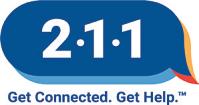


When you hear the phrase tooth loss, what comes to mind first? Trauma? Tooth decay? The tooth fairy? While all of these are acceptable associations, there are many more factors involved in tooth loss. From a population perspective, older Americans are keeping their teeth longer, according to a 2016 study. In fact, complete tooth loss has decreased by more than 75% in adults 65 to 75 years old over the past five decades.
However, keeping your teeth longer also means caring for them longer. This study also showed that the prevalence of complete or severe tooth loss is higher among individuals with chronic diseases or overall worse health, compared to those without these conditions. Given that six in 10 adults in the U.S. have a chronic disease, tooth loss is an important topic to discuss. Let’s break down an example of how chronic disease relates to tooth loss, what else influences tooth loss and ways to prevent it.
Periodontitis is one of the leading causes of tooth loss. Bacteria, plaque and tartar buildup on teeth can cause inflammation and infection that can spread below the gum and lead to loss of bone and teeth, if severe. It is very common, as about 70% of adults 65 and older and 47% of adults 30 and older have some form of periodontal disease. Over the years, research has shown that certain factors, including chronic diseases, increase risk for periodontal disease. For example, diabetes, which impacts one in 10 Americans, has a bidirectional relationship with periodontal disease, where controlled periodontal disease can help control blood sugar levels and vice versa.
Tooth decay or caries — cavities — are another leading cause of tooth loss. Like periodontal disease, tooth decay is caused by bacteria in your mouth. These bacteria build up in sticky plaque on your teeth and feed on sugars in your diet. As a result, they release acids that break down your teeth. If left untreated, the decay can destroy large portions of your teeth, leading to pain, tooth fracture and, if severe, tooth loss.
While periodontitis and tooth decay are highly preventable, accidents happen. Whether it’s sports or chewing hard food, teeth can be knocked out or break. In either scenario, it is critical to know how to manage dental emergencies and see your dentist immediately. If a tooth is knocked out, remember these dos and don’ts from the American Association of Endodontics:
• Reposition the tooth in the socket immediately. If it can’t be replaced, put it in milk, in your mouth next to your cheek or in an emergency tooth preservation kit.
• See an endodontist or dentist within 30 minutes of the injury, if possible.
• Don’t touch the root.
• Don’t rinse the tooth with any soap or chemicals.
• Don’t wrap the tooth in a tissue or cloth.
If your tooth breaks but isn’t knocked out, call to consult your dentist and schedule an appointment immediately. Keep the area clean by rinsing with warm water, especially if your gums are sore. If there are any sharp edges of the tooth, dental wax is available at most drugstores.
A study led by investigators at the Harvard School of Dental Medicine suggested that “machine-learning algorithm models incorporating socioeconomic characteristics were better at predicting tooth loss than those relying on routine clinical dental indicators alone.”
Furthermore, new research reported that:
• Adults living in urban areas visited the dentist more than those in rural areas.
• Women were more likely than men to visit the dentist in both rural and urban areas.
• The number of adult dental visits increased as family income increased.
• Non-Hispanic white adults were more likely than Hispanic and non-Hispanic black adults to have a dental visit in urban areas.
Therefore, it is important to consider how disparities in access to and use of dental care impact not only tooth loss but also oral and overall health.
Tooth loss is not just about losing a tooth. It can significantly impact your quality of life, from affecting speech and self-esteem to restricting your diet, which can lead to either weight loss or obesity. Furthermore, the COVID-19 pandemic led to an increase in stress-related oral health conditions like teeth grinding and cracked or chipped teeth.
While the cause of tooth loss can be related to many things, it is largely preventable. You can avoid pain and losing your teeth with a few simple steps at home focused on limiting the amount of bacteria in your mouth and seeing your dentist regularly.
Tien Jiang, DMD, MEd, is a contributor to Harvard Health Publications.

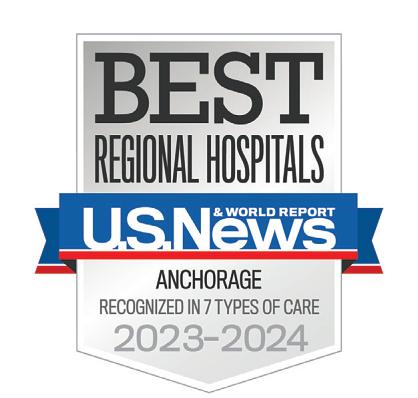
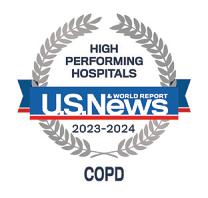

Providence has once again been recognized as a top health care provider by U.S. News & World Repor t. Providence Alaska Medical Center has been named 2023 -2024 Best Regional Hospital in Anchorage and High Per forming in seven procedures and conditions.
Our award-winning care reflects the exceptional work of our caregivers, providers and community par tners, who share our commitment to ensuring Alaskans get the best care possible close to home. Learn more at Providence.org/PAMCawards.




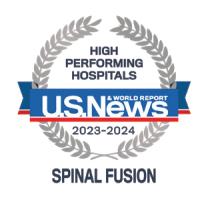
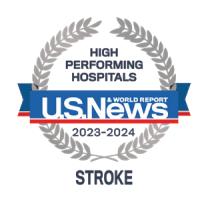

The Anchorage & Valley Radiation Therapy Centers have been providing Alaskans with compassionate care and state-of-the-art cancer treatment since 1993. Home to Alaska’s only Gamma Knife radiosurgery system, our clinics provide cutting-edge treatment technologies for optimal outcomes.
We believe you shouldn’t have to travel far from home to receive top-of-the-line radiation treatment, and our compassionate, highly experienced team is there for you every step of the way. So you can get back to living your life.


